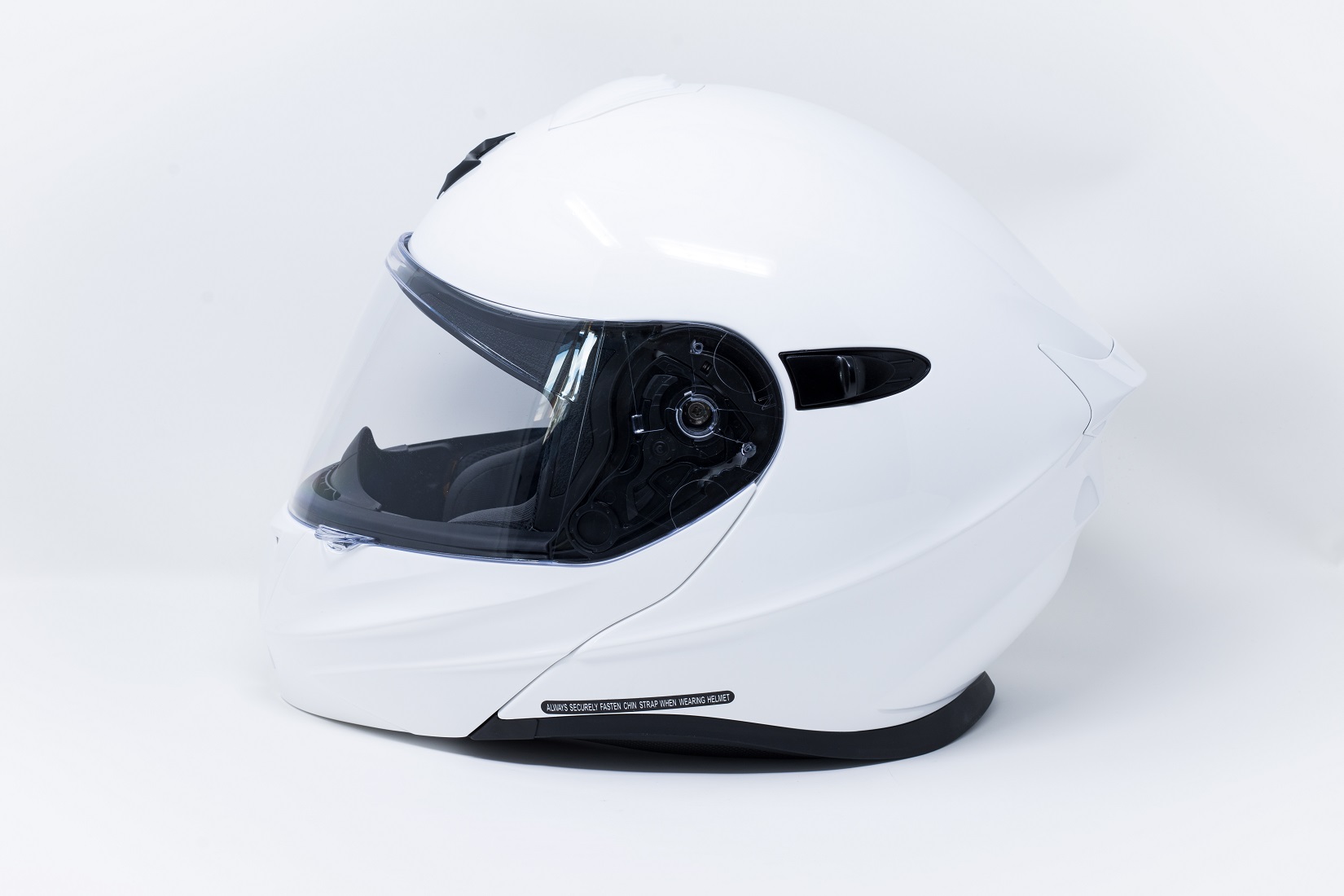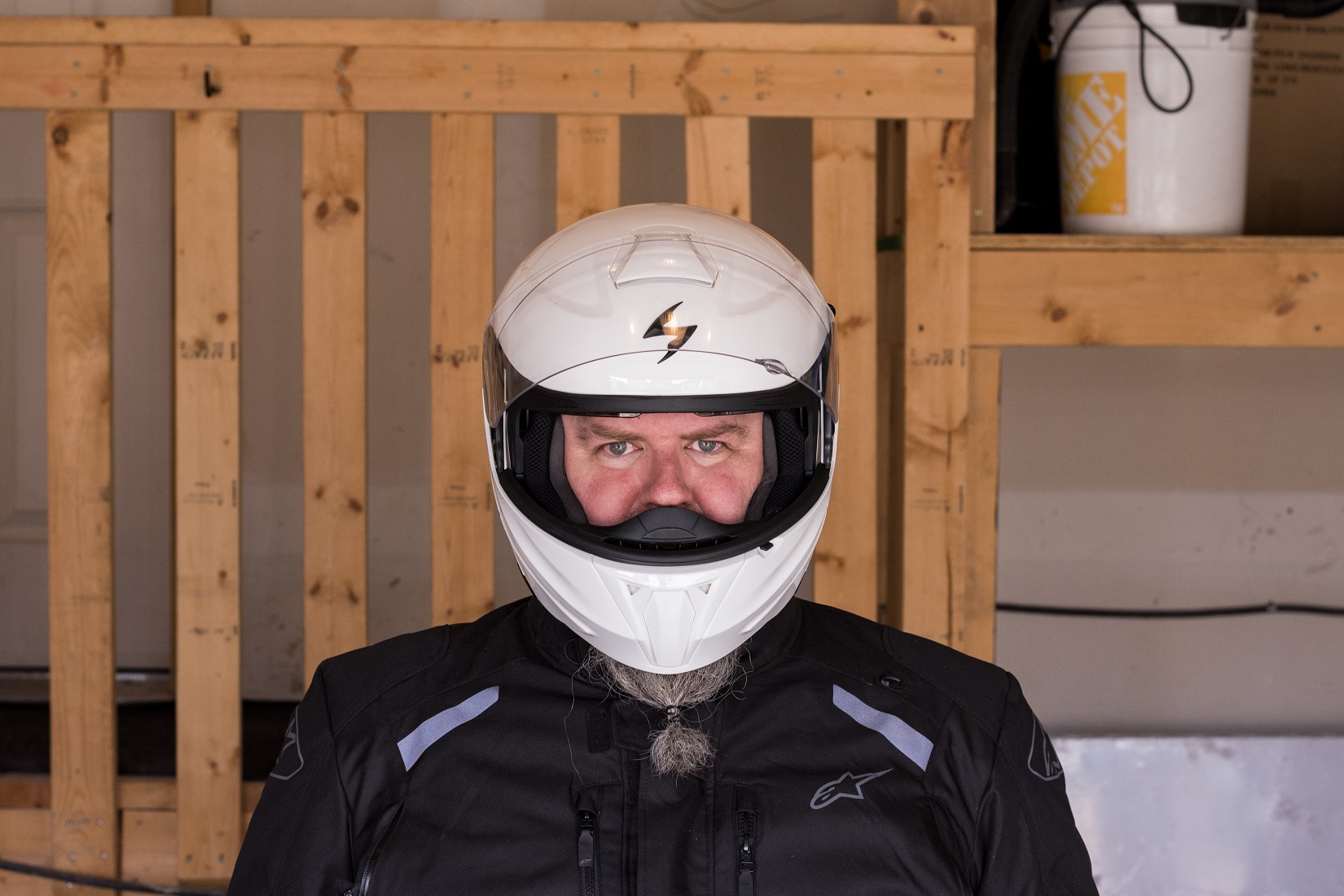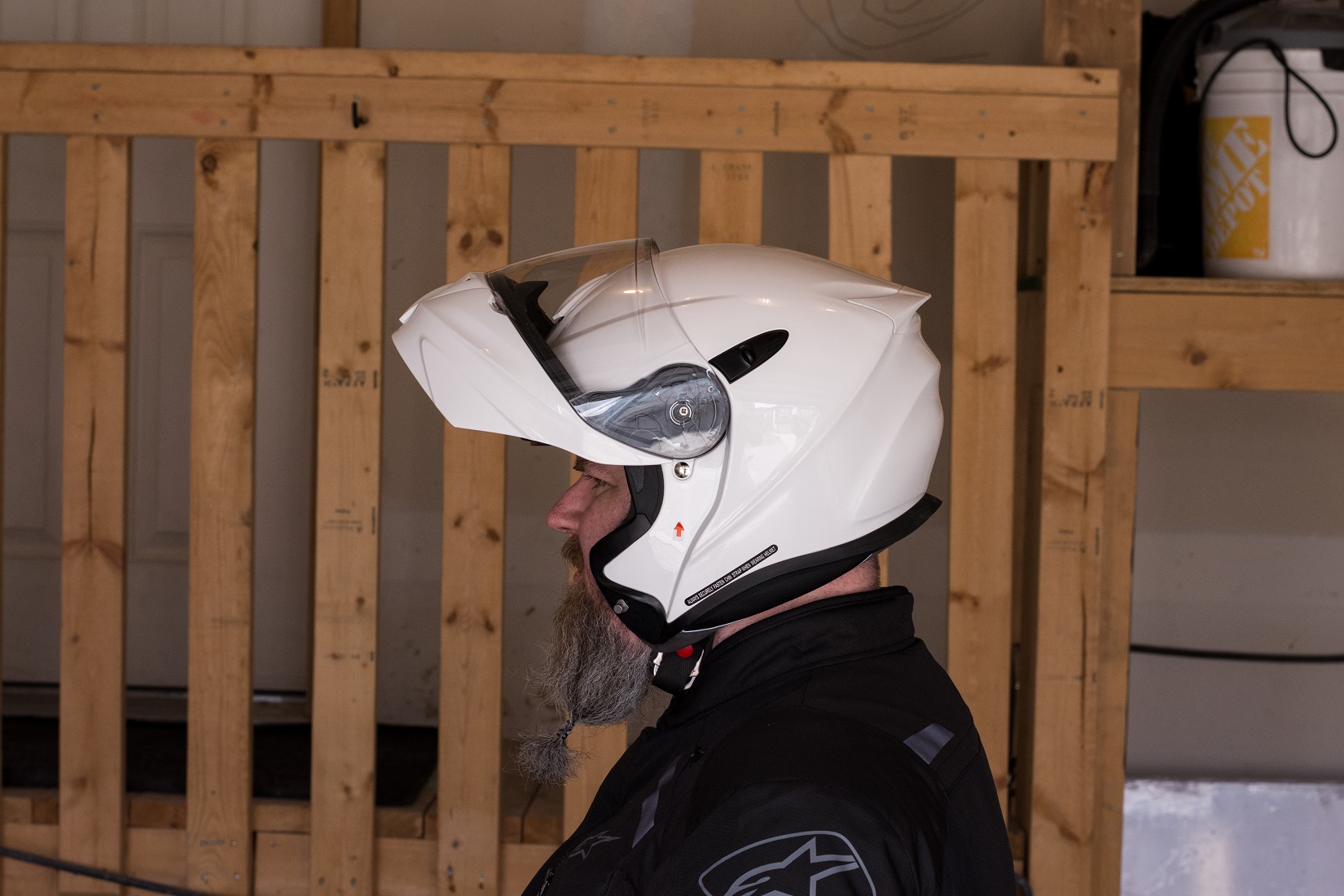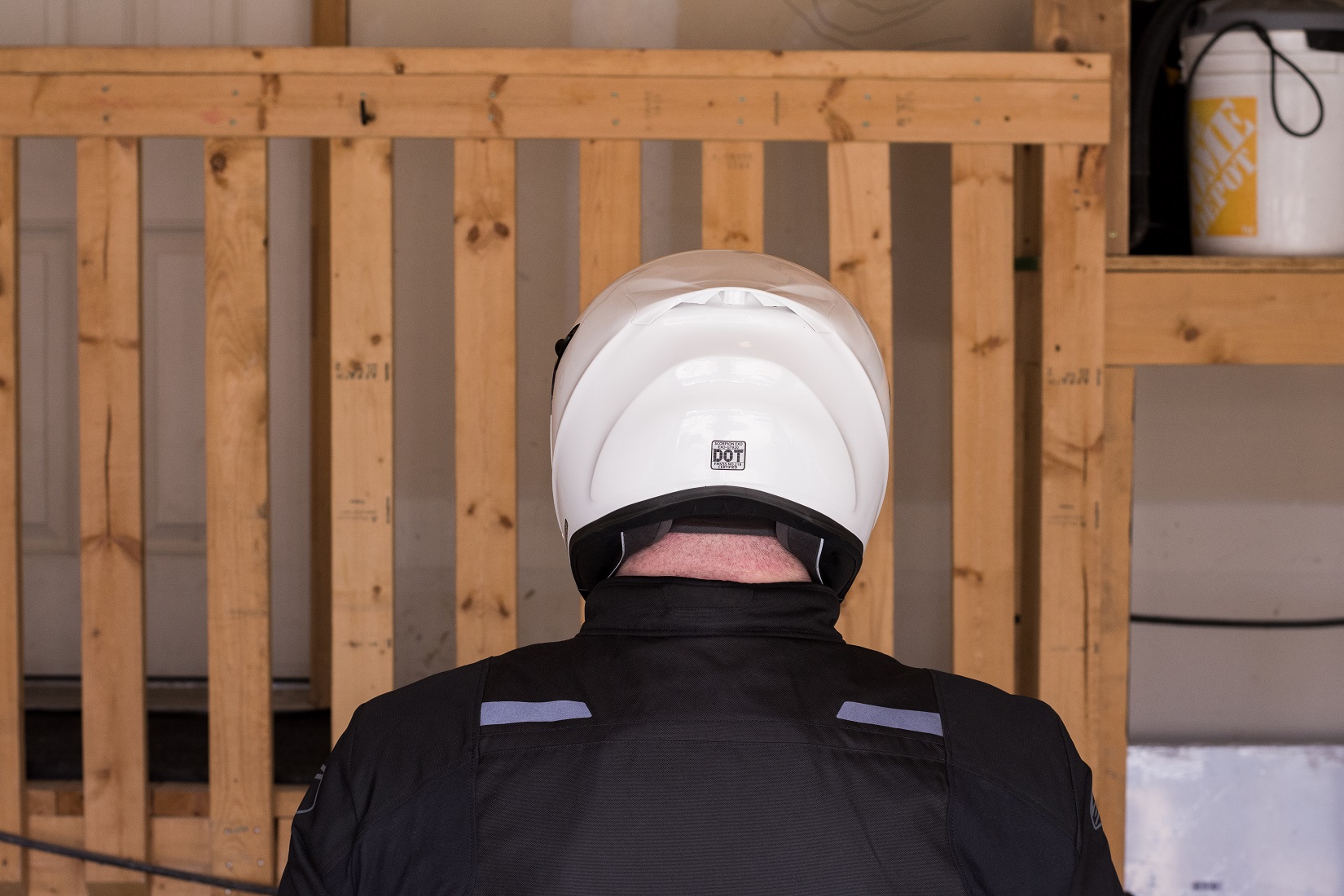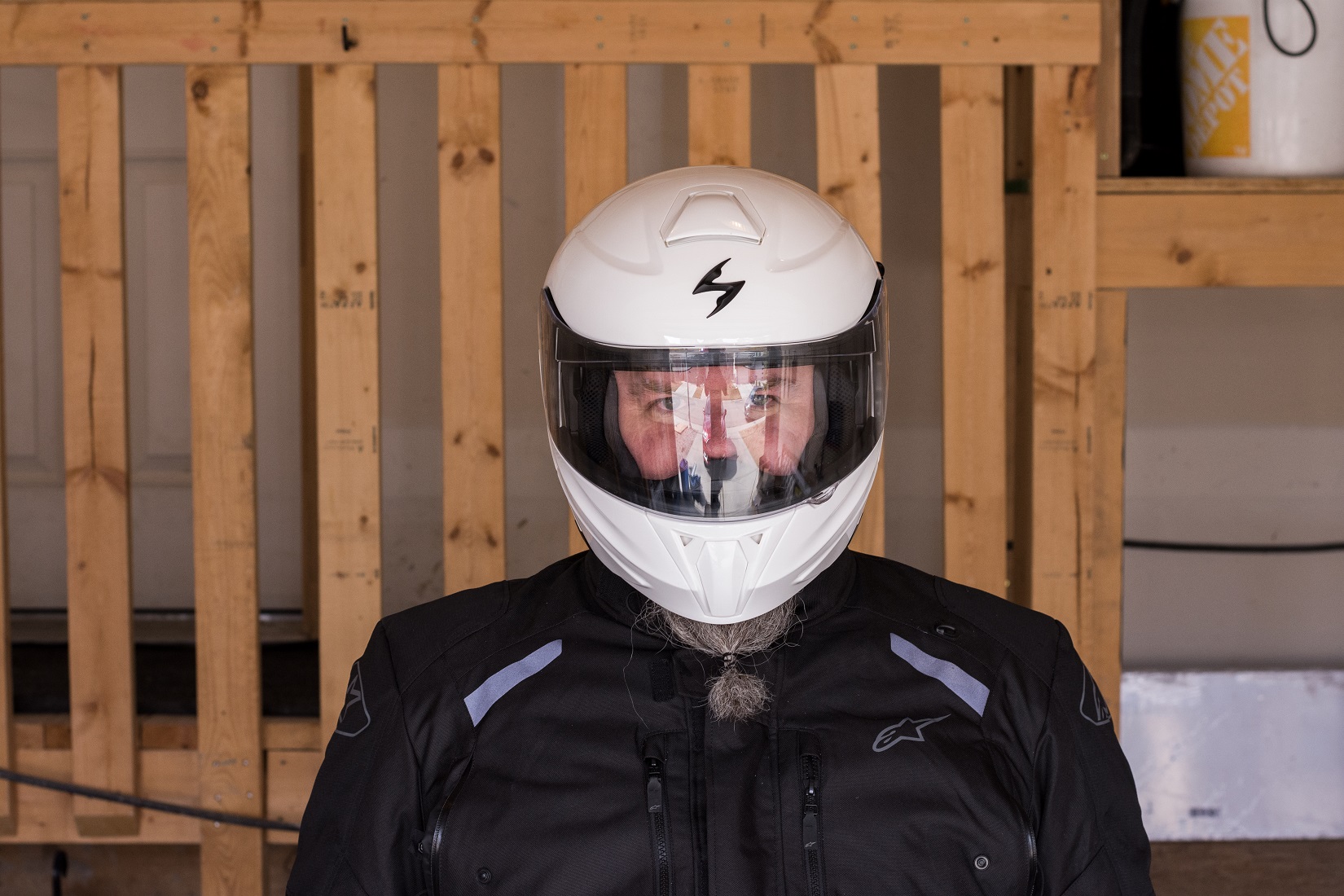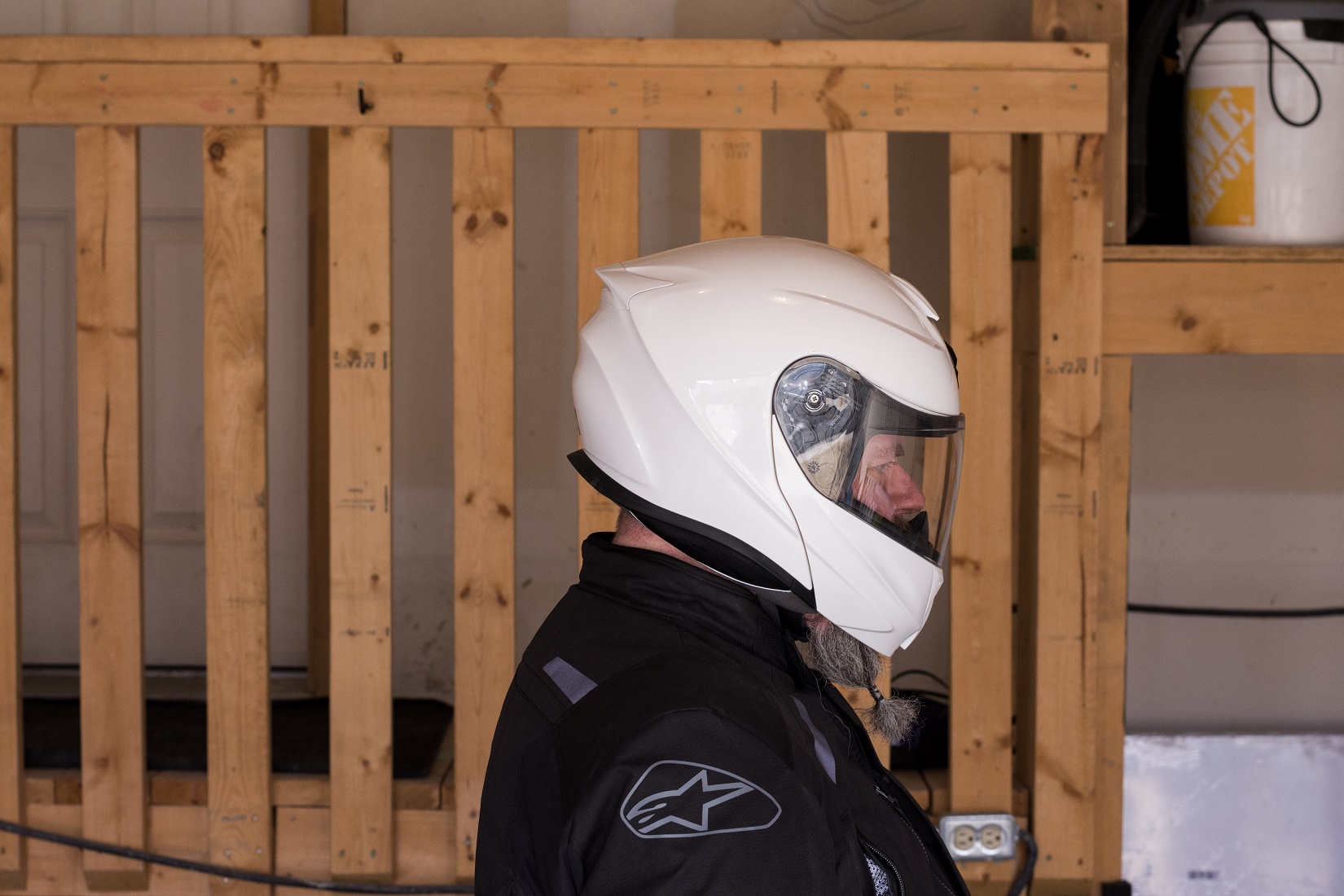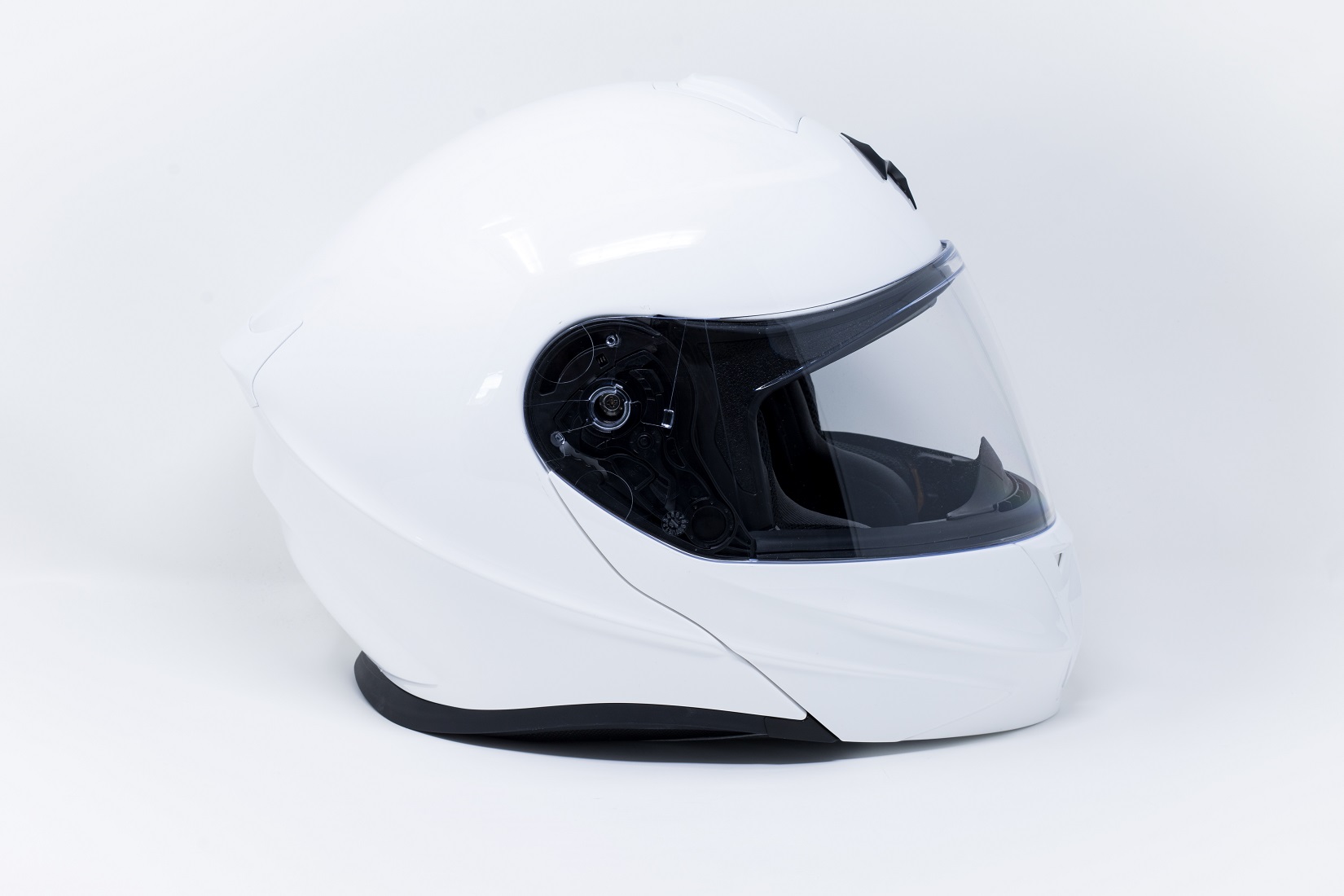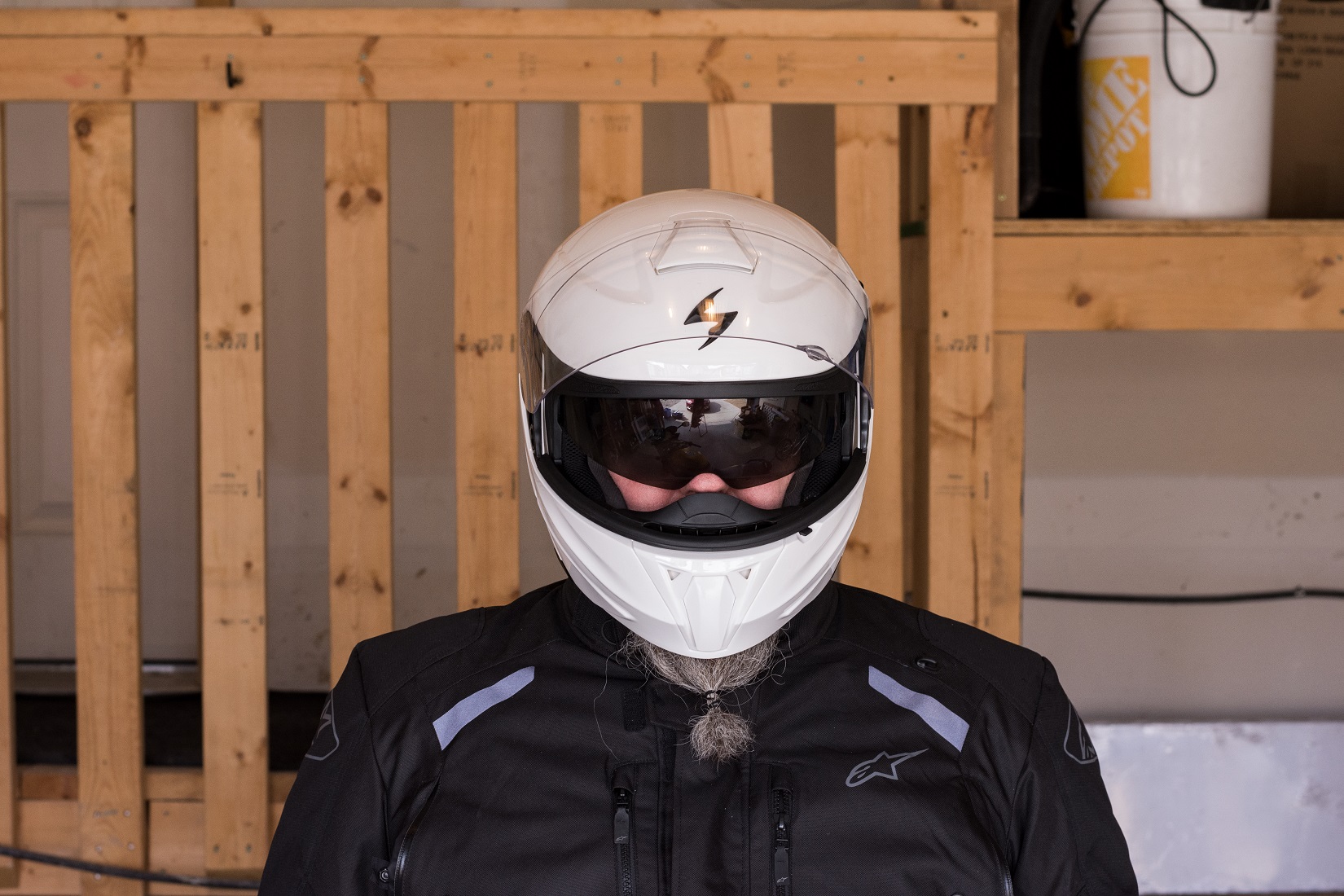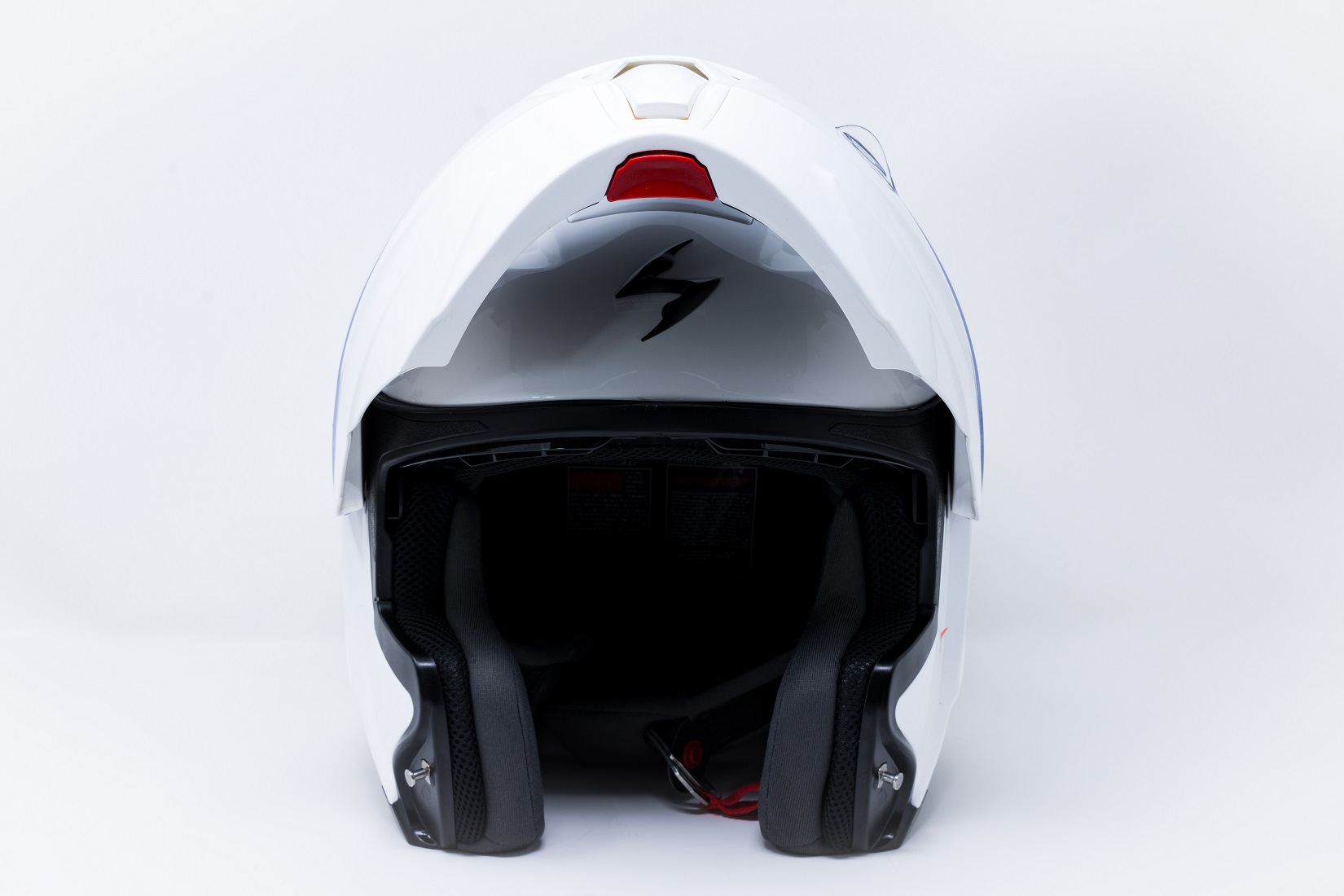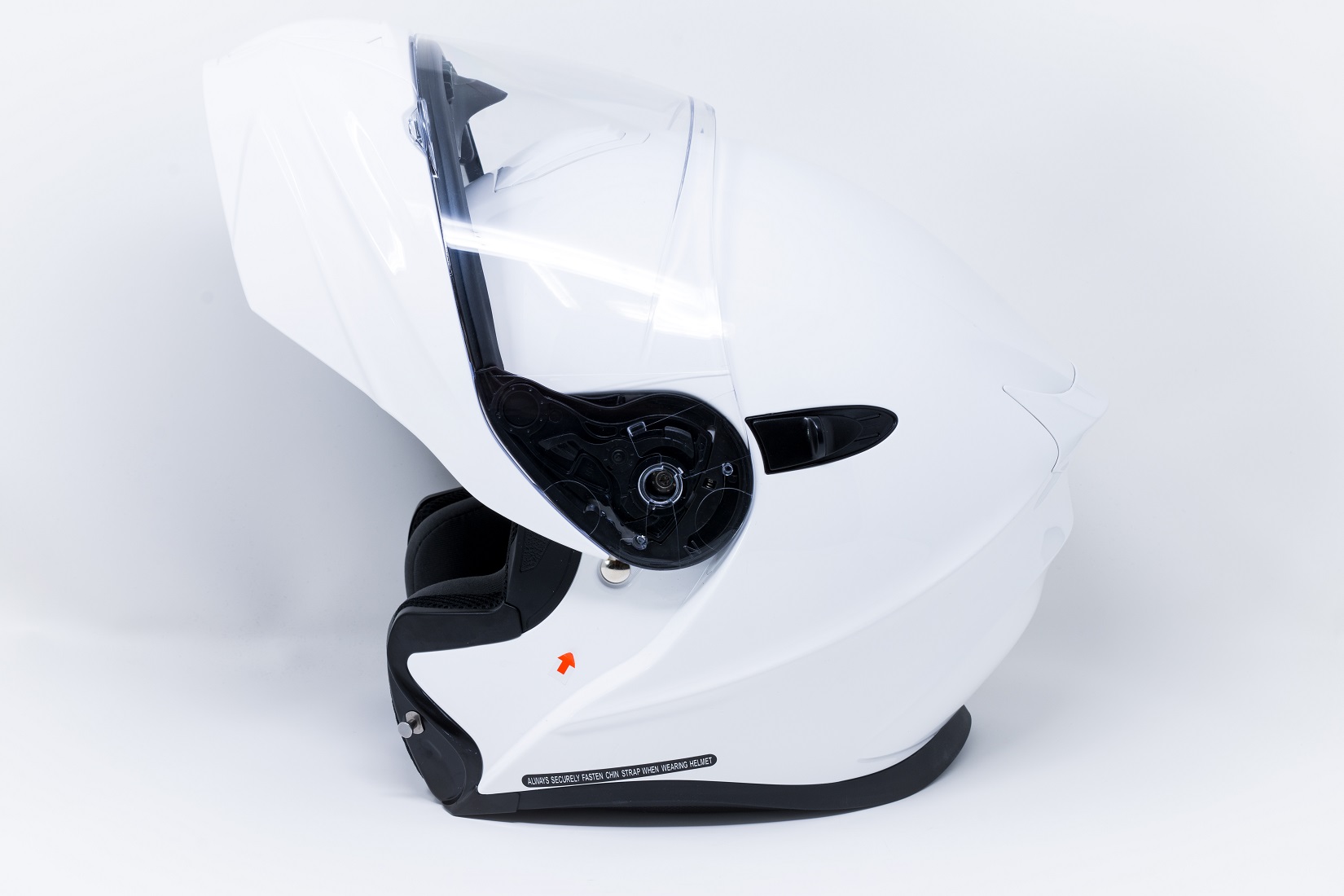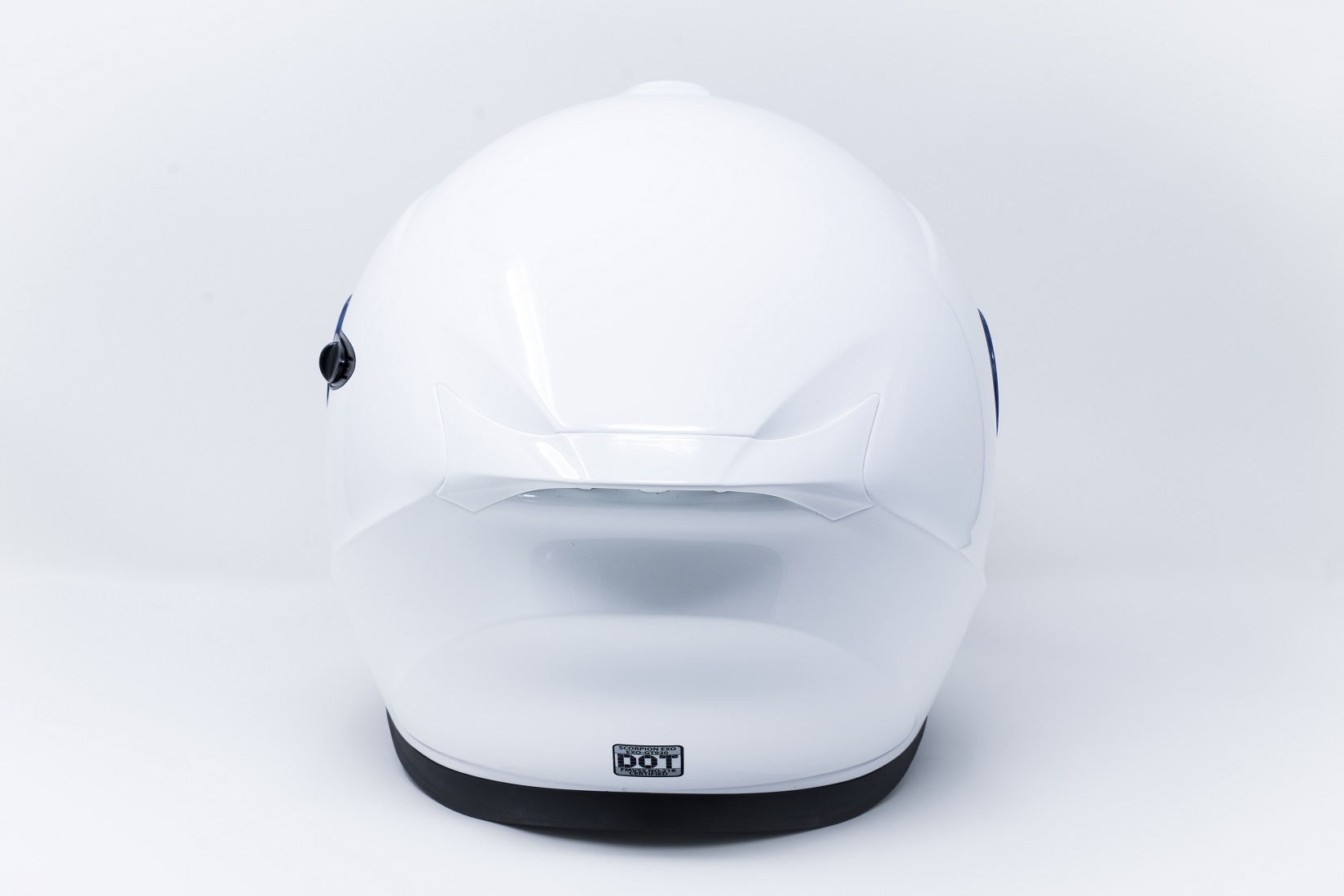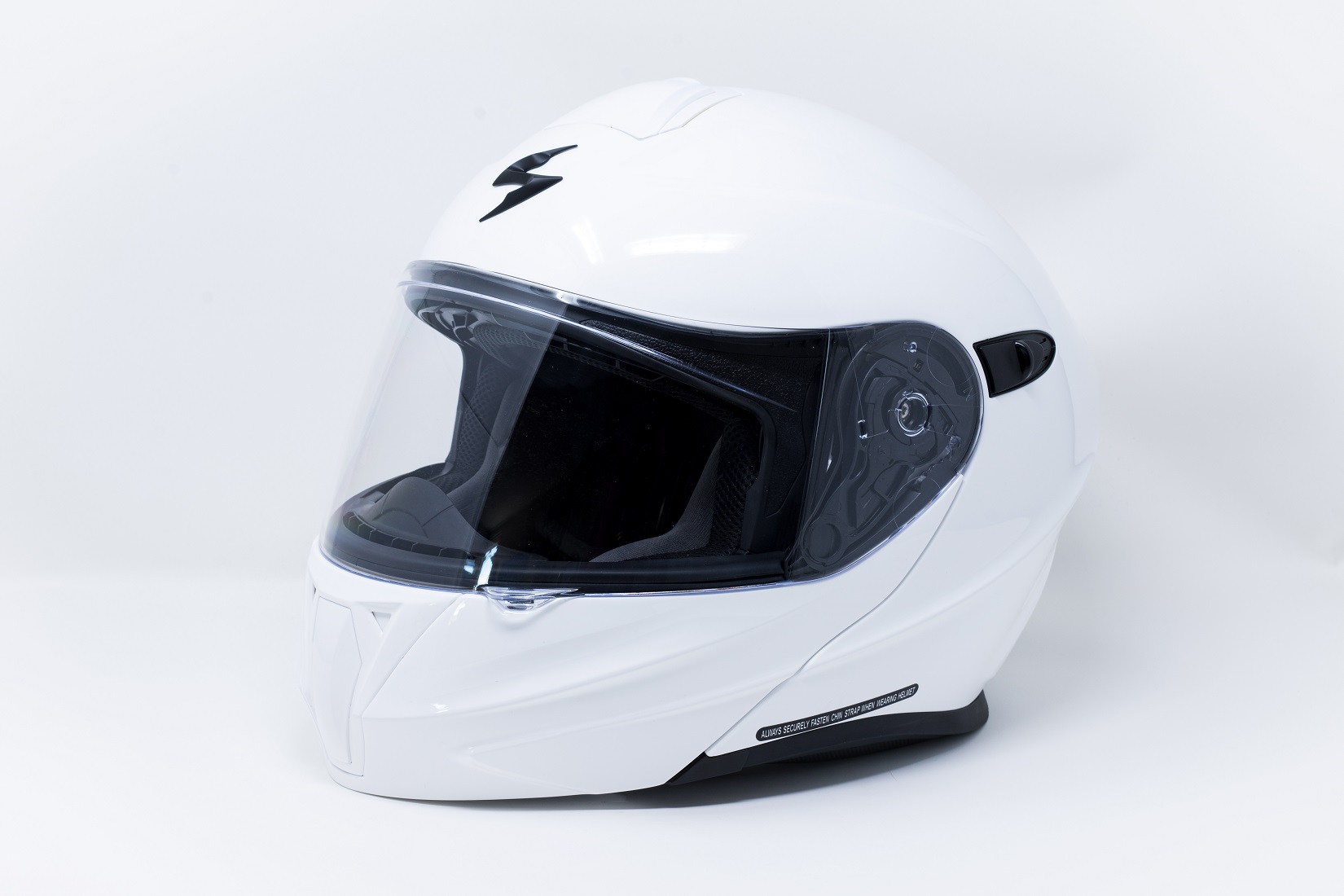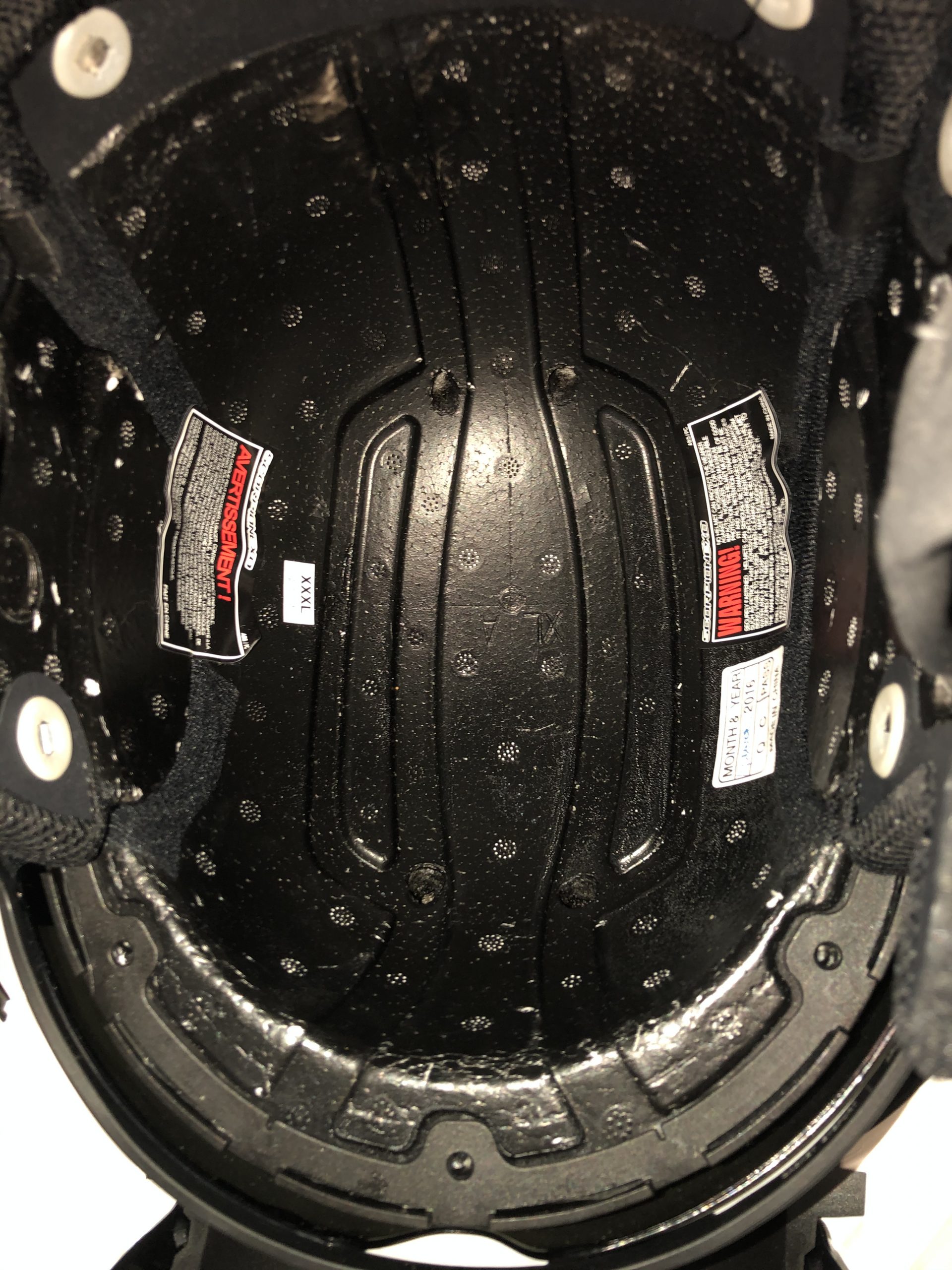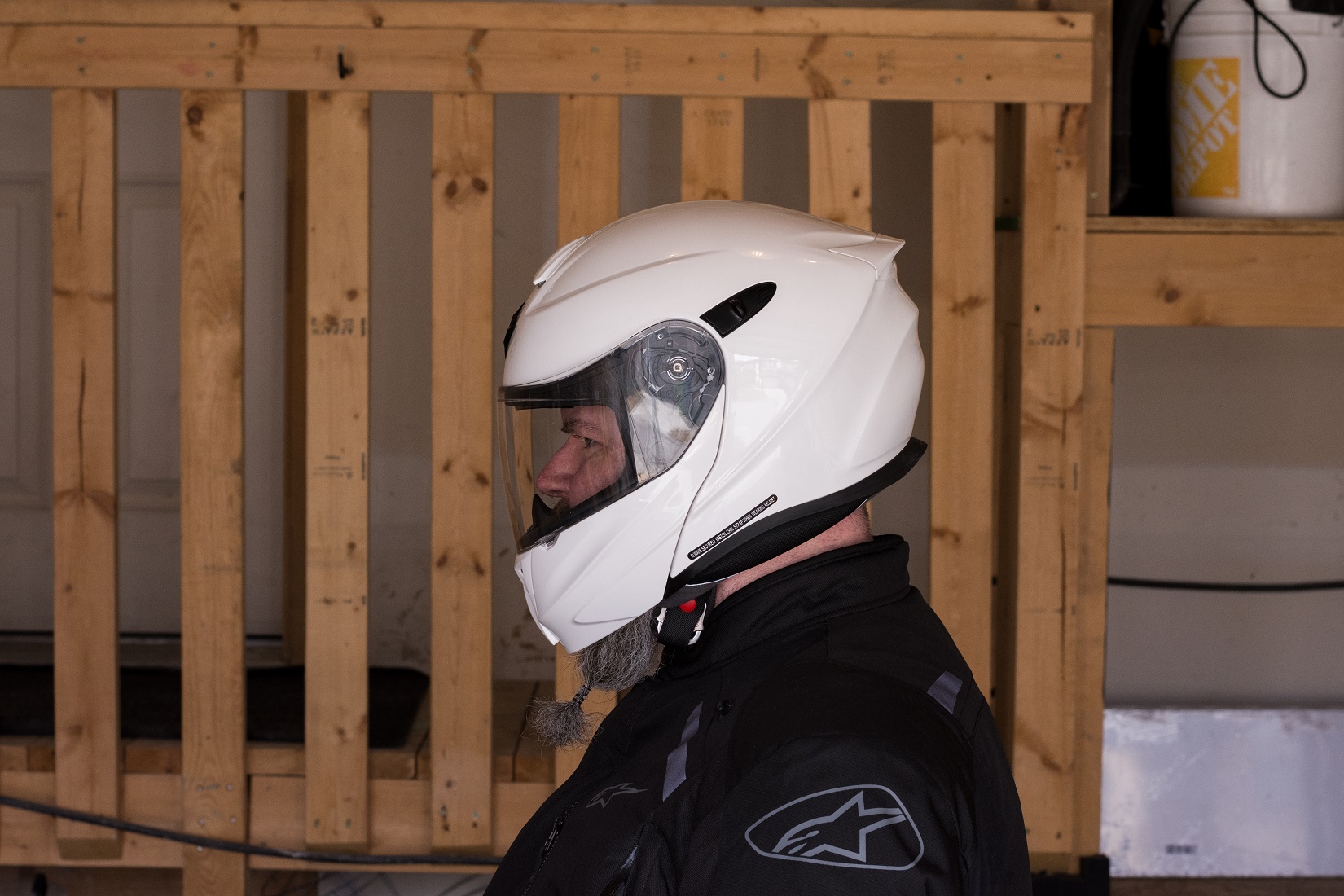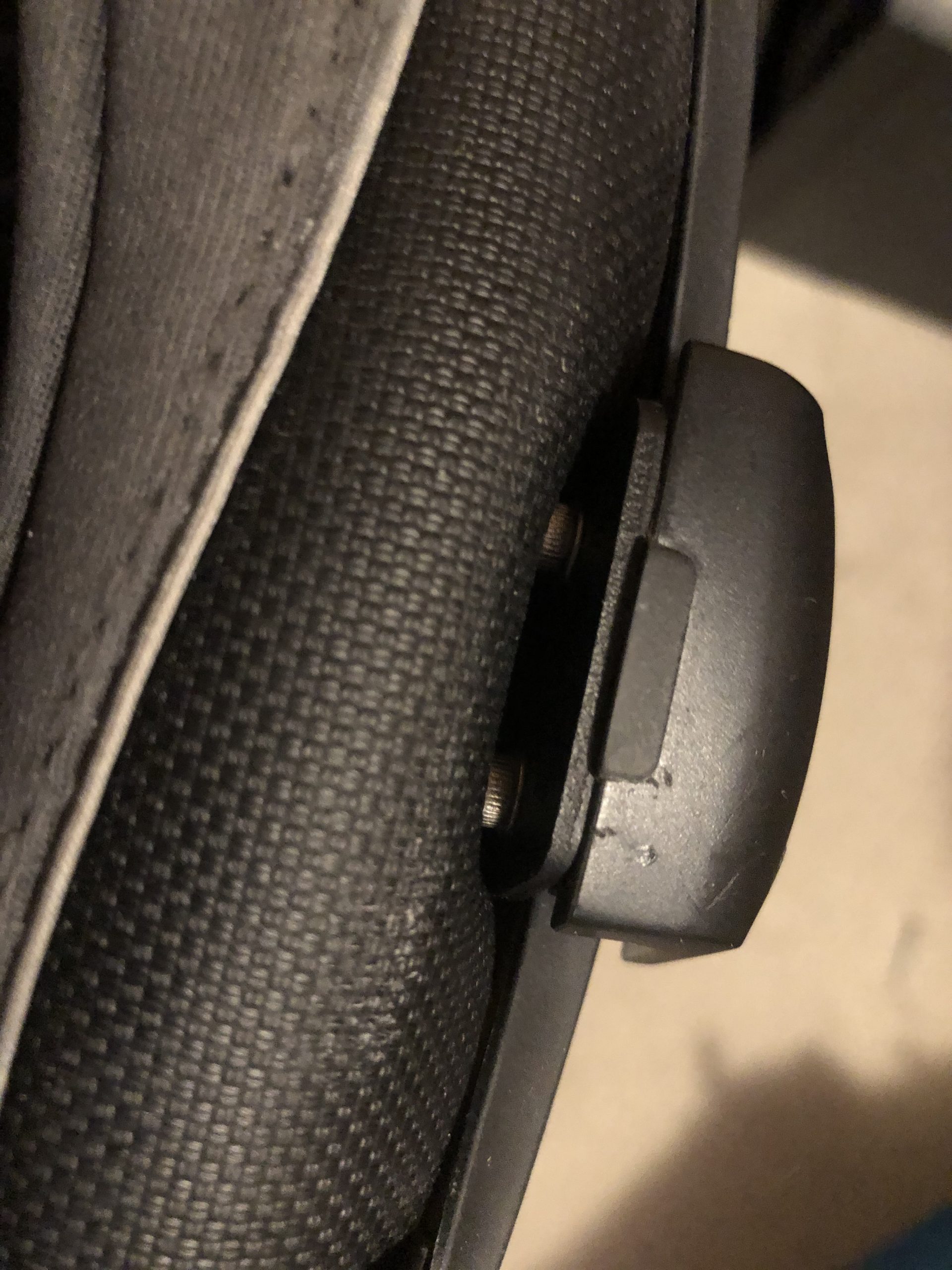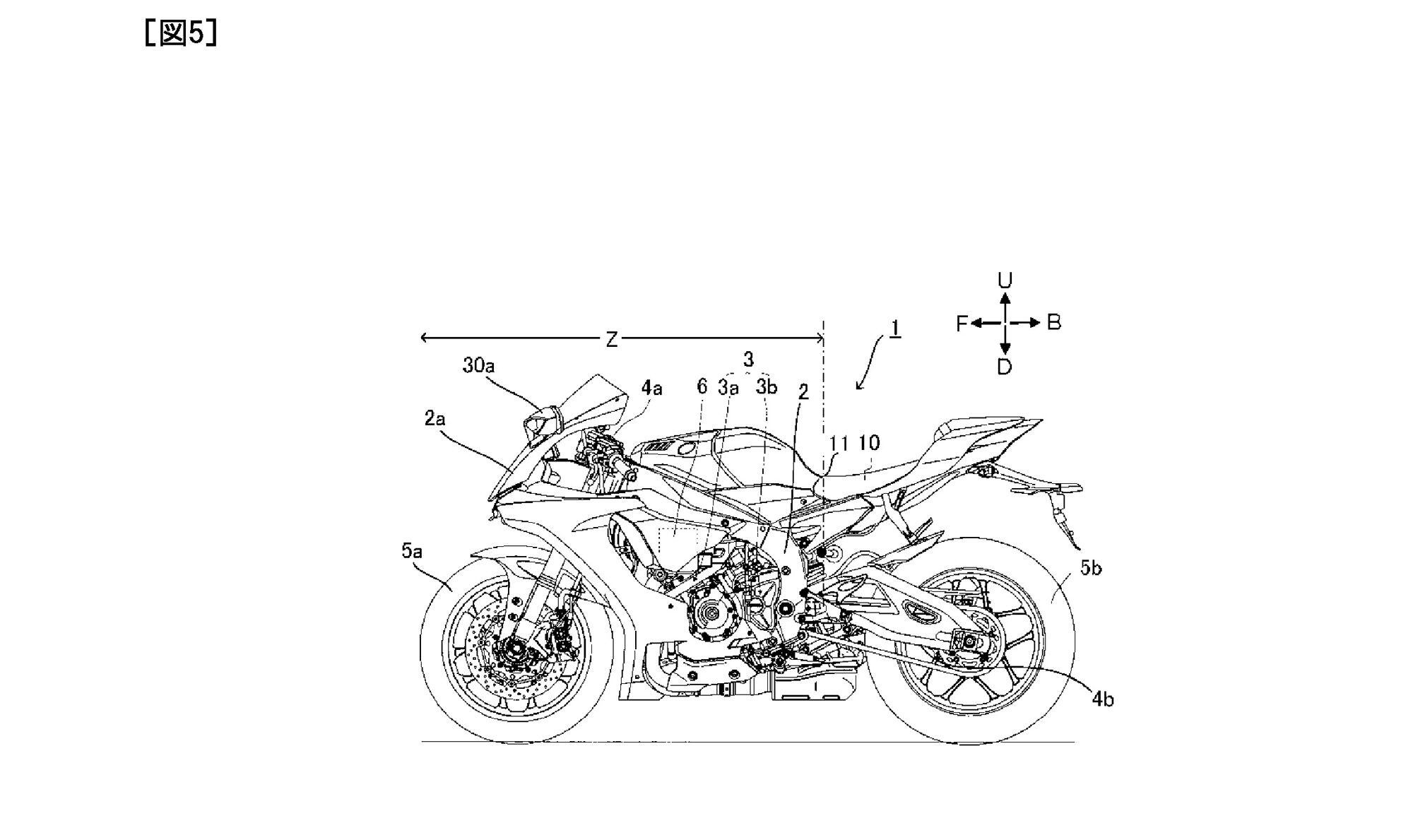Features
The Scorpion EXO-GT920 is a modular helmet that is well-liked by many riders, mostly for its large array of features at a very affordable price. I must also disclaim that I myself, subjectively, think it’s a great helmet, as I purchased this specific helmet in the review for myself. However, as this is a review, I will be as objective as possible.
The biggest feature about the GT920 that makes many a rider happy is the fact that it has an easy to operate chin bar lift, which is activated with a red release button in the middle of the chin. This button is large enough to easily be found while wearing gloves, and it swings up to a crown locked position with little effort. This allows for ventilation, easy access to water and/or a snack at a rest break, or being able to see much better when filling the tank.
The helmet also has a visor quick-release that allows for toolless visor swaps. It should be noted that the helmet only ships with a clear visor, and has a built-in dropdown sunshade in case the day gets bright. The visor itself is nicely proportioned, giving great peripheral and vertical vision.
Construction
The EXO-GT920 uses an injection molded polycarbonate shell in two sizes. While this is often considered the cheapest shell material, it is far from a poor material to be used on a helmet, and the quality of the shell is impressive. It feels premium and is very easy to clean with a little plastic-safe helmet cleaner and a microfiber towel. Seeing as this helmet is white, and bugs are starting to appear from their winter hideaways, I’m fairly sure there will be some bug splatter to clean up here and there!
Behind the shell is a dual-density, multi-layer EPS foam impact structure. It is grooved at the top for the top vent to pass air through and does have indents for a comm system’s speakers built-in, but the foam is otherwise very sturdy and provides an excellent backing to the shell.
The chin strap is firmly bolted between the EPS and shell and is padded for comfort down through the cheek pads to the stainless steel double D rings. Even a sharp shake or nod of the head generates no squeaks or grinds, which can be a sign of a bad strap base. It simply feels solid, well connected, and durable.
Fit & Comfort
The EXO-GT920 is labelled as an intermediate oval helmet, however, it fits more like a mix between an intermediate and a long oval. For me, the fit is tight but not uncomfortable, and without doing up the padded chin strap, it doesn’t move around on my head if I shake side or nod. If you are more of a pure intermediate or pure long oval, this helmet will more than likely feel like it’s either squeezing your temples or the crown area is compressing against your forehead.
Also of note is that I am a 64 cm crown sizing, so I selected a 3XL helmet despite 64 cm being on the higher end of the 2XL, and the 3XL fits perfectly.
The cheek padding is generous, to say the least, and squishes in on the face quite a bit. However, after about a minute of the helmet warming due to body heat, it almost seems like it relaxes around your head and settles in. On the top of the head, the padding is very thin and ventilated, more of a support lattice than anything, to allow for ventilation to pass around your scalp and remove excess heat.
The lining on the pads is fully Scorpion KwikWick II, which I can attest to working extremely well at wicking up perspiration. During a particularly hot day during testing, with the visor cracked open and the sunshade down, the airflow at about 25 to 30 MPH was just enough to work with the lining and carry any excess heat out the back and bottom of the helmet. The lining and padding are fully removable with 3 push-pull tabs on each cheek pad, and a crown slot lock and two push-pull tabs for the top liner.
Depending on how strong your neck and shoulders are, the helmet is a bit on the weightier side at about 3.7 lbs. As I used to play rugby back in my high school days, my neck is still pretty thick and strong, and I have worn this helmet over multiple rides that have lasted 2 or more hours without complaint. The padding fits nicely against the back of my neck, and cheek pads extend down past my jaw to give me a fully enclosed and comfortable feel.
In terms of fit and comfort, I give the EXO-GT920 full marks, 5 out of 5 stars.
Visor & Vision
The clear visor that comes with the GT920 is one of the better ones I have had in front of my eyes. I still technically classify as a new rider, and after trying on multiple helmets and riding around with a few others on my head, the wide and tall opening for the visor with the chin bar down allows me to see everything from the bike’s dash to the sky, and I cannot see the edges of the opening in my peripheral vision.
The visor itself is 98% optically correct and does not come with pinlock compatibility. However, to combat the need for a pinlock, and most likely to keep the price of the helmet low, Scorpion has applied a very effective anti-fog coating to the inside of the visor. It was only during a particularly cool day, with rain threatening to come down and the temperature down at around the 45 to 50 F mark did any type of fogging occur, and that was only at the very base of the visor.
One complaint I do have about the visor, however, are the lock stops. The first stop feels too wide, opening the visor just under an inch. I would have preferred the first lock stop to be at a half inch or so, to allow for ventilation and airflow, but not so much that it bounces up into your eyes and dries them out. The second lock stop is a full half open, and then the final lock stop is all the way open.
This can be combated a little with the use of the drop down sun visor. It is operated by a very positive feeling slide on the upper left side of the helmet, behind the visor hinge, and is far enough away from the eyes that you could realistically fit most pairs of eyeglasses under it without hitting it. It does require a little force to move, but when the visor drops down or retracts, it does so with a very satisfying Thunk!
I am not entirely sure if it is spring-assisted, but the stops needing a little force to move from ensures that the visor will not vibrate down during a particularly rough section of road, which is extremely important if you are riding at night.
In terms of the visor and vision, I, unfortunately, have to dock a full mark off for the annoying first lock stop position, leaving the GT920 with a rating of 4 out 5 stars
Closure
The most important thing with a modular helmet, apart from its fit, is how it secures the chin bar. For the EXO-GT920, this closure is solidly metal to metal, with high strength stainless steel pins being clamped with decently thick stainless steel locking clamps. It’s reassuring when wearing the helmet and dropping the chin bar down to hear the metallic clunk of the clamps passing over and snapping down around the pins.
The pins themselves are about a quarter inch in diameter, and are solidly mounted into the EPS foam of the cheek pad area. The clamps are hidden behind an EPS liner in the chin bar, but from what I was able to see are solidly bolted as well between the shell and EPS foam, giving it a really positive, strong feel to the metal. I tried to wiggle it, to tug on it, to see if I could make it move or squeak, and it stayed 100% firmly where it was.
As this is my personal helmet and I don’t want to destructively test it, I only gently yanked on the chin bar in and up and forward motion without pressing the lock release button. I would probably have an easier time breaking into the White House than I would have trying to see if the clamps would release without using potentially destructive force. This is a great thing, as it is the helmet’s job to be destroyed in a crash, saving the head of the rider.
For the closure quality and strength, 5 out of 5 stars.
Ventilation
And the EXO-GT920 was doing so well.
The primary ventilation of the GT920 is provided by a crown mounted, binary open or closed air scoop. This scoop opens just over a quarter of an inch and feeds to two air intakes. The air then passes through two channels in the top of the helmet, as well as dispersing a little over the scalp area, before being directed out of two air vents at the back that sit under a venturi spoiler.
Secondary ventilation is through a binary open or closed chin vent, which feeds most of its air into a visor vent to cool the front of the face and help prevent visor fogging. Only just under half seems to reach the nose and mouth, and it doesn’t blow particularly hard either, being restricted by some very well disguised mesh.
During the particularly hot day I mentioned in the Fit & Comfort section, I had both vents in the open position and… nothing. I’m bald. I don’t have hair to get in the way of ventilation. Yet unless I was going at least 40 MPH, there was simply not enough air flowing through. The faster you go, the more air comes in naturally due to the ram air effect, and cruising at 60 MPH was finally getting me enough airflow to actually feel it cooling my head down.
This, I feel, is why the first lock stop on the visor is so large. Scorpion realized that there was not enough air flow through two half inch holes in the top of the helmet under one opening, and made the visor lock stop larger to vent more air directly onto the face and into the lining to passively pass up and out of the exhausts. But on the hot day I rode, my pads and lining were soaked by the time I got home, and I’m very thankful they are removable and washable because it was frankly a bit unpleasant.
I do have to give credit for the ventilation working once at highway/freeway speeds, but that’s only because at that speed, the ram air effect is forcing air in because it has nowhere else to go. For ventilation, I have to mark the GT920 down to 1 out of 5 stars.
Visibility
While there are graphic versions of the Scorpion EXO-GT920, for this specific review, the all-white version was chosen. There are two other colors available, a dark greyish matte black, and a glossy black version.
The helmet does stand out very well against darker colored backgrounds, such as the grey of a road, green grass and trees along city streets, and the like. Where visibility does falter a bit is if it is a particularly cloudy day with the sun illuminating those close white. This could cause another motorist to lose the helmet against the clouds for a moment, and the addition of some high visibility stripes or reflective materials would definitely be an improvement.
At night, as long as the helmet catches any sort of light, the glossy white finish reflects it well on its own, but again I must stress that having some reflective or high visibility stripes or material included would go a long way to improving visibility.
For the version of the GT920 that I tested, I give it 3.5 out of 5 stars
Other Issues & Real World Testing
I found two minor issues when giving the EXO-GT920 a thorough testing, with one just being an inconvenience, and the other being an actual issue.
The inconvenience is that the GT920 has a rubber lip around the base of the helmet, to seal off the slight gap between the shell and the EPS foam. I have a SENA 10C Pro that I use as both my comms and as a “dash cam.” With the SENA mounting system, which is effectively a rubber backed clamp that you have to tighten down against the shell, the rubber lip makes installing and removing the left side cheek pad, where my 10C Pro is, a bit of a challenge, as the pad has a soft plastic lip that is supposed to mate against the rubber lip to prevent air roar.
The actual issue I found with the GT920 is that on certain motorcycle types, namely dual sports and potentially even cruisers, due to the upright seating position, at over 60 MPH there is a definite feeling of lift. There is a chin curtain you can install, but being goatee’d as I am with my grey bearded attempt at looking like a Viking, it pushes against it quite hard. Tucking my chin down a little did help, and on sportbikes, standards, and any bike where you are slightly inclined forwards, it only happens if you break the speed limit.
In terms of wind noise, the helmet doesn’t produce any air whistle over the modular closure due to some pretty trick aerodynamic design along the front of the chin bar. They may not look like much, but those two very minor fins along each side of the chin bar are enough to dirce the air away from the closure gap, and even help move air up the side of the helmet to join the airflow over the rear spoiler. Still, there is the natural roar of the wind itself, and if you are going to be riding for a decent amount of time, wearing earplugs is definitely recommended.
Safety Certification
The Scorpion EXO-GT920 carries only a DOT certification.
It has been independently tested at the SHARP testing labs in the UK, where one of the most important aspects of a modular helmet, the chin bar, is repeatedly impacted from multiple angles to test how often it stays locked. The test resulted in a 90% pass rate, with only 10% of the time one of the closure locks popping open, and only a few times the whole chin bar popped completely open.
Verdict
In my objective opinion, the EXO-GT920 is a very good helmet, at an affordable price, that is held back by just a few little things that if designed or made differently would make it a great helmet. I am impressed by the quality of the helmet for price, and the comfortable fit for a size in-betweener like me.
I had no issues at all with the build quality of the helmet, nor did I feel at any time that I was unsafe wearing it. There were times when I definitely felt the heat of the day while riding wearing it, but a quick blast down the nearest 50 or 60 MPH road fixed that fairly quickly. The fact that the entire lining and padding of the helmet is removable and hand washable is a bit of a godsend in that regard, because believe me, the KwikWick II lining lives up to it’s name and it’s like using a shammy against your face if sweating. It just drinks up sweat and asks for more.
Factoring in the ventilation issues, the annoyance of the first lockstop, and the other positive and negative factors discussed, I have no problem giving the Scorpion EXO-GT920 a 3.5 out of 5 star rating.
Overall: 3.5 out of 5 stars
Pros
- Excellent fit for a longer-oval intermediate head shape
- Padding is tight and firm to start off, then once it warms up is still tight but softer
- Couldn’t shake the helmet around on my head at all, it was like it was glued to it
- Excellent visibility through the visor
- Built-in sun visor won’t shake or vibrate loose during riding, and slides down and up with a very positive action and reassuring sound
- No squeaks, rattles, or sounds other than my breathing and the air passing around my helmet as I rode. Excellent build quality
Cons
- The first lockstop on the visor leaves it too wide, allowing so much air in that it aggravates the eyes some
- The ventilation system fails spectacularly at anything other than near highway or freeway speeds. The top vent seems designed to use the ram air effect for cooling, and the chin vent directs most of its air up across the visor for anti-fogging.
- The helmet does have a low pressure dead area under the chin if you are sat bolt upright on your bike, and can cause a definite tug of lift at freeway speeds.


